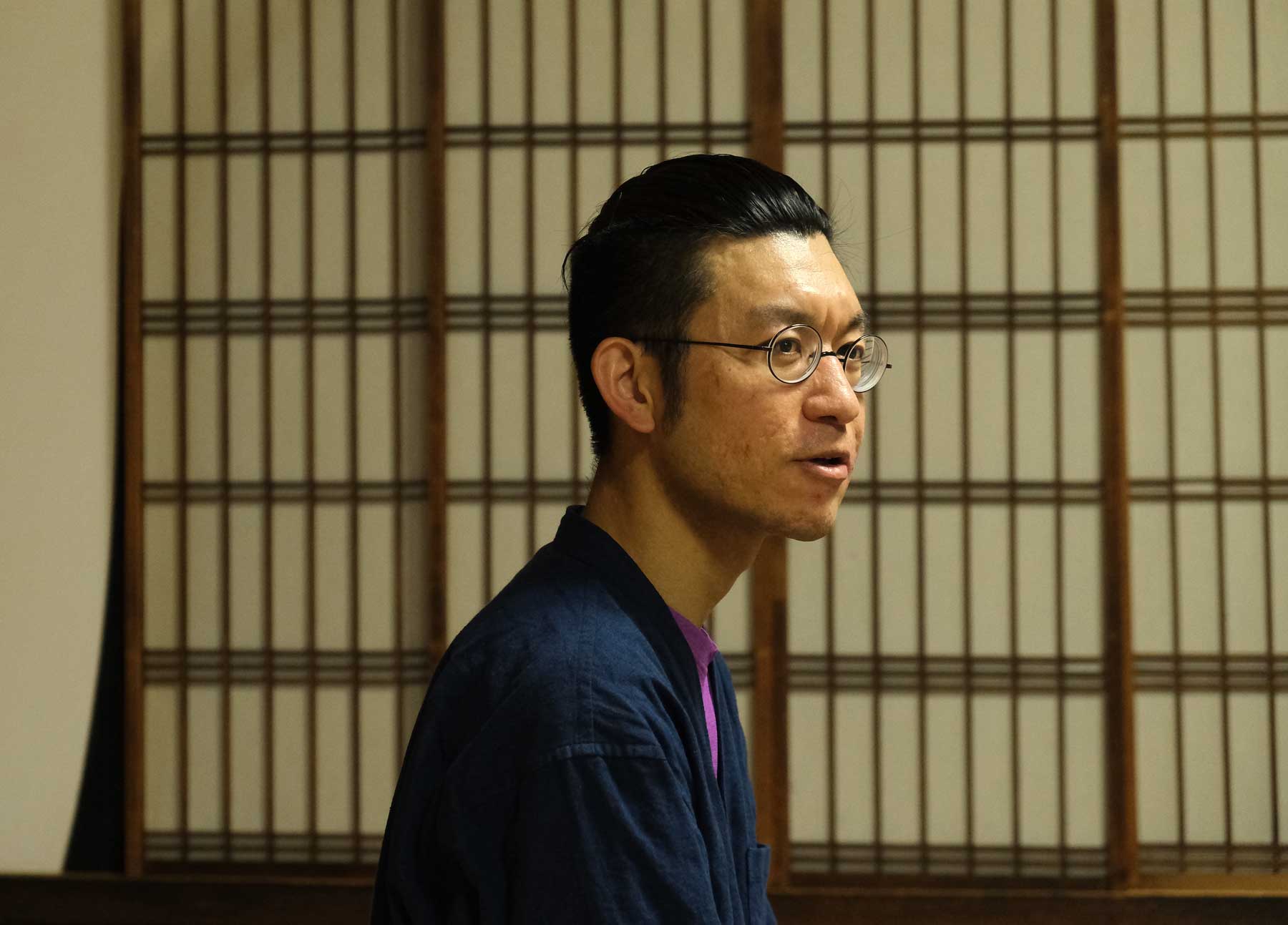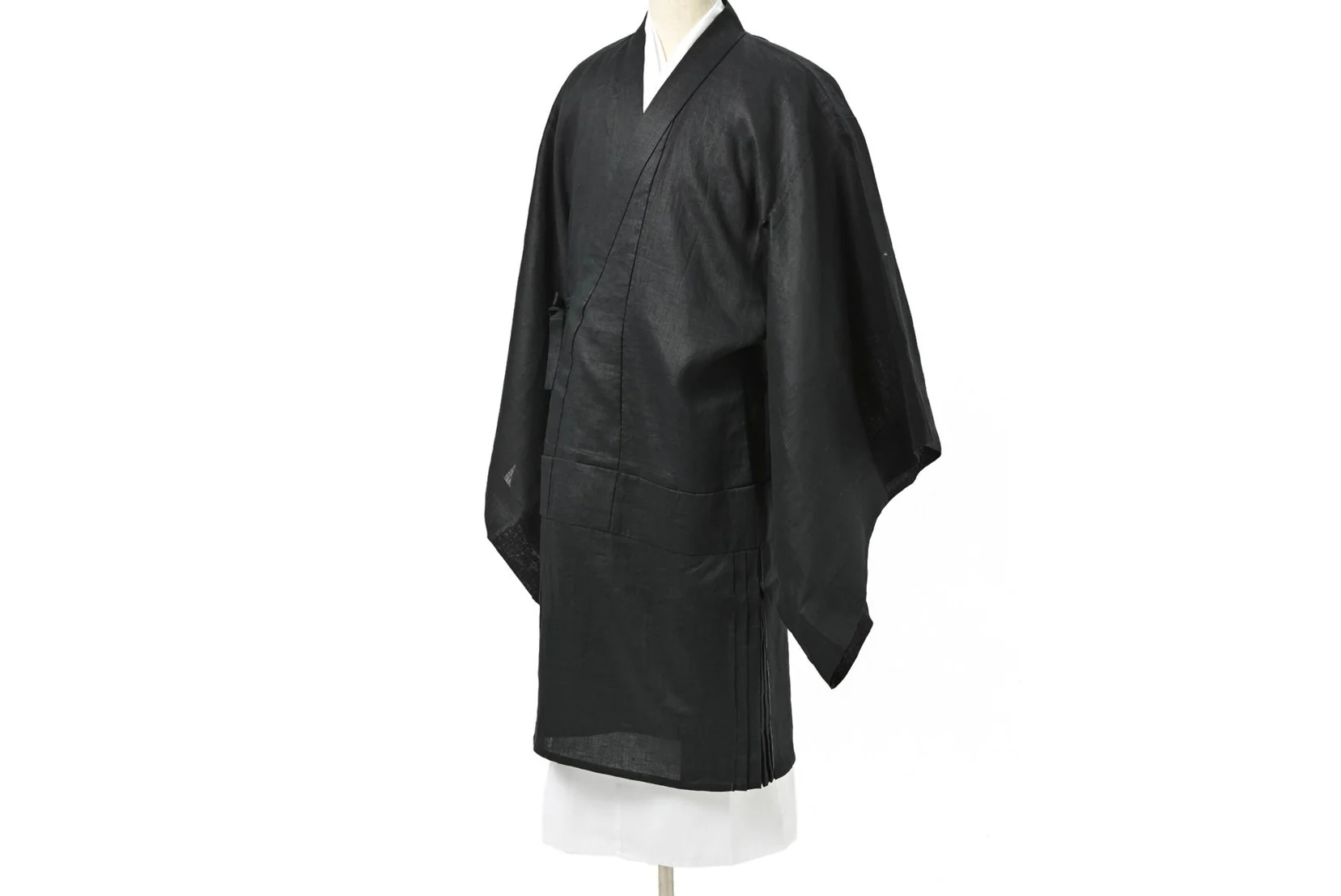-
Partner Talk #2
Kengo Kawakatsu
4th generation owner of Naoshichi Hoi Shop
-

Kawakatsu Kengo is the fourth-generation owner of Naoshichi Hoi Ten, which was founded in 1920. He has a shop near Nishi Honganji Temple in Kyoto, and manufactures and sells robes and Buddhist robes worn by Buddhist monks. With the philosophy of "passing on Buddhism and craftsmen to the next generation," he is proactively developing new products with original ideas and high technical skills that are not bound by stereotypes. Some of his most talked-about products include the SDGs robes, Ahimsa silk robes (silk made by spinning silkworms from cocoons without killing them), and Christian stoles made by hand in Japan. He also runs Naoshichi University, an online university where people can learn about religion from monks, pastors, and researchers. He also posts a variety of content on his YouTube channel "Snack Naoshichi," such as an introduction to the behind-the-scenes of manufacturing and advice for monks, making people feel closer to Buddhism and Buddhist robes. He is also highly supported as a "learning place" for religious people and craftsmen who will lead the next generation.
-
TOPIC
Naoshichi Priest's Robe Shop Hemp Priest's Robe
The robes worn by monks for their daily religious activities, such as monthly visits to the temple and sermons, are called "fuhou," "kuroi," or "kairyo-fuku." These robes were made by Naoshichi Hoi Shop in Kyoto using weavearth's hemp fabric (the black top in the photo, for all-year use). In addition to the natural texture of natural fibers, they are characterized by a moderate firmness and luster. Sales will begin in the summer of 2021.
-

Proposing "sustainable clothing" for Buddhist monks
Creative intent
With efforts toward the SDGs, environmental awareness is growing among Buddhist monks year by year. For that reason, we wanted to make the robes, which are usually made from synthetic fibers, out of "sustainable materials." Hemp in particular can be grown without the use of pesticides or chemical fertilizers, and it also has the effect of improving the soil environment, so we feel that it has a high affinity with Buddhism. Respecting nature and living a moderate life is also in line with the teachings of Buddhism.
I also thought it was very meaningful for religious people to take the lead in "wearing ethical clothing." I think the way it reaches the general public is completely different when a monk says "hemp is good for the environment" compared to when a manufacturer or the media says it. I also thought it was good that it could convey the message of environmental protection in a more personal way.
Thoughts after completion
We have received mostly positive feedback from the monks who have purchased our robes. We were most worried about wrinkles when wearing the robes, but we were relieved to hear that they "don't bother us much." Natural wrinkles are one of the attractions of hemp, but since robes can be considered formal attire for monks, some sects require them to be worn more "neatly." Now that we have overcome the wrinkle issue, we would like to continue to actively promote our products. We would also like to consider producing small item holders and book covers to broaden the range of users.
Crosstalk:
weavearth x Kengo Kawakatsu
Aiming to reuse hemp — designing what happens "after" use
Naoshichi: Hemp material is said to be very durable, so we are interested in how long the purchaser will be able to continue using the product. On the other hand, due to the role of the vestments, it will be difficult to wear worn-out ones until the end, so I think they will need to be replaced at some point. When that happens, what do you think about reusing or recycling the fabric?
What do you think, weavearth?
weavearth Daito (hereinafter, weavearth): We have an idea to promote the recycling of used hemp into "paper" and "yarn". Both of these are already being put into practice both domestically and internationally, so we are currently considering partnering with them. From now on, it will no longer be the era where manufacturers can "make it and be done with it". We would like to think of a system that responsibly recycles not only used fabric, but also the scraps and edges of fabric produced during manufacturing, without discarding them.
Naoshichi: Recycling and remaking are areas where Japanese kimonos have excelled. We may be able to offer some suggestions. For kimonos that are cut in straight lines, almost every inch of fabric is used. Also, pure silk kimonos are made with the assumption that they will be repaired, which is called "toki niu" (the stitching is undone, the fabric is dyed back into a bolt of cloth, and then re-tailored). For this reason, they are purposely hand-sewn in a way that makes it easy to undone.
weavearth: Hand-sewing kimonos is a wonderful culture. We are no longer in an age of mass consumption, and I think consumers are taking good care of their things and considering "fixing things with their own hands" as a fun activity. So I feel like the value of hand-sewing is being brought into the spotlight once again. What's more, Naoshichi Hoi-ten has its own in-house seamstresses. I'd definitely like to ask weavearth to do some tailoring for me.
Naoshichi: I'd be happy to do that. Although it's outside the company, we also have many dyers. We can also accommodate requests for re-dyeing!
Creating innovation through "Buddhism x Hemp"
Naoshi: I think Buddhism and sustainability go very well together. For example, the cloth-like "kesa" worn by monks is based on the robes worn by monks in ancient India. At that time, monks were not allowed to own property or personal possessions, so they made their robes (kesa) by sewing together worn-out and discarded rags. Japanese kesa have evolved into something more glamorous since then, but at their origin there is a "spirit of cherishing things." I hope that hemp robes will raise awareness of this.
weavearth: I was just thinking, don't you think that the robes and fabric that a monk wears for five or ten years naturally take on a kind of "virtue"?
I feel that the fabric itself, which is imbued with many sacred sutras and teachings, will become a source of "new value" in the future. Therefore, if we can create a new "upcycle" from used hemp fabric, I feel that it will create an economic cycle that connects relationships and stories in a different context to the existing one-way consumption.
Naoshichi: That's an interesting perspective! After hearing your story, I had an idea to make hemp robes "crowdfunded." The robes would be made with your donations, and the return would come 5 or 7 years later. If the fabric was returned to the supporters in a different form after it had served its purpose, I felt it would be a very meaningful cycle.
weavearth: That's great, I'm getting excited. Because abstinence is considered to be the norm, religion has not been spoken about loudly in the context of "business" or "innovation" until now. But by adding the factor of "sustainability" to this, I think the possibilities will expand dramatically. We might even be able to talk about "religion and fashion." I hope that this will create a new chemistry that will not only revitalize Buddhism, but also the markets for robes and hemp. I would love to continue working with you in the future. Thank you!

